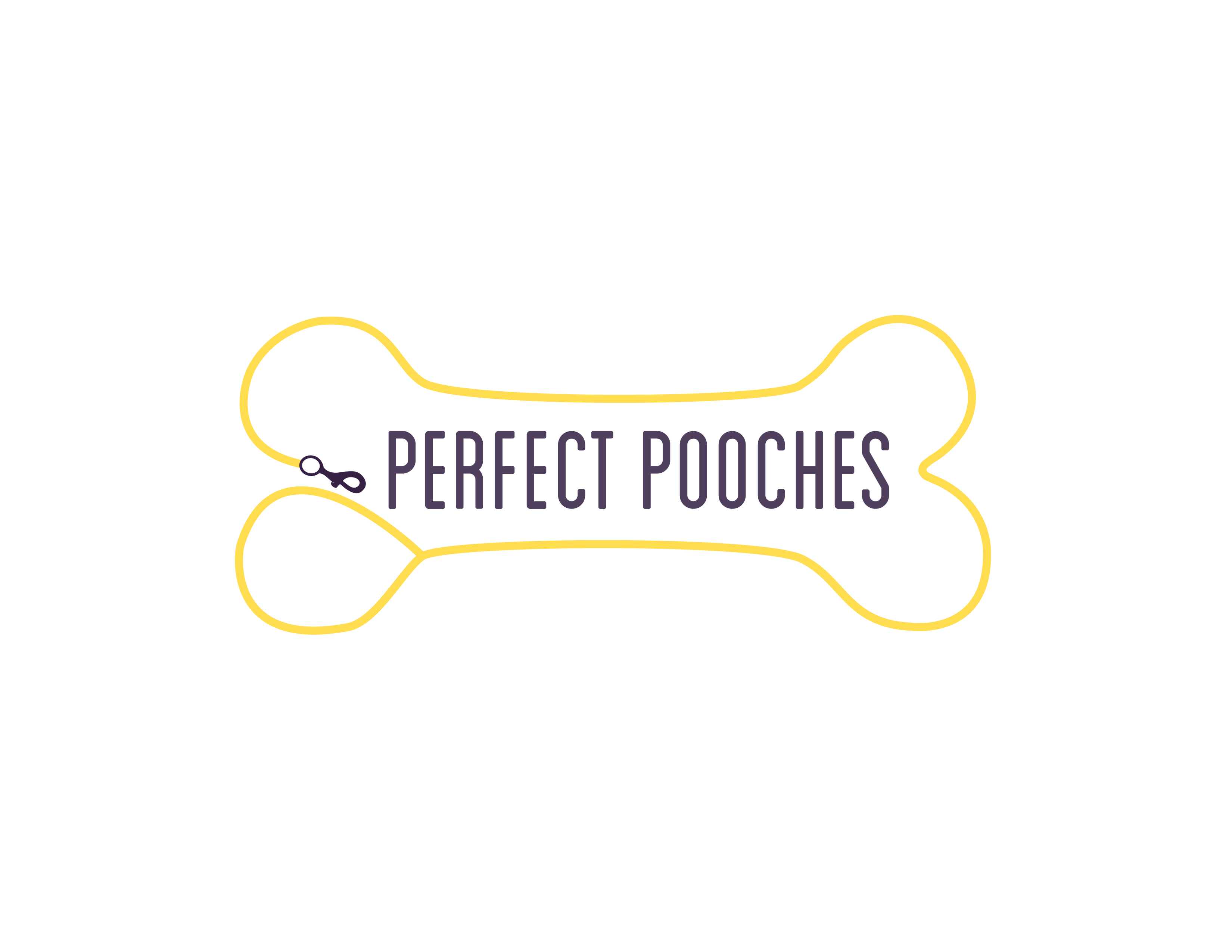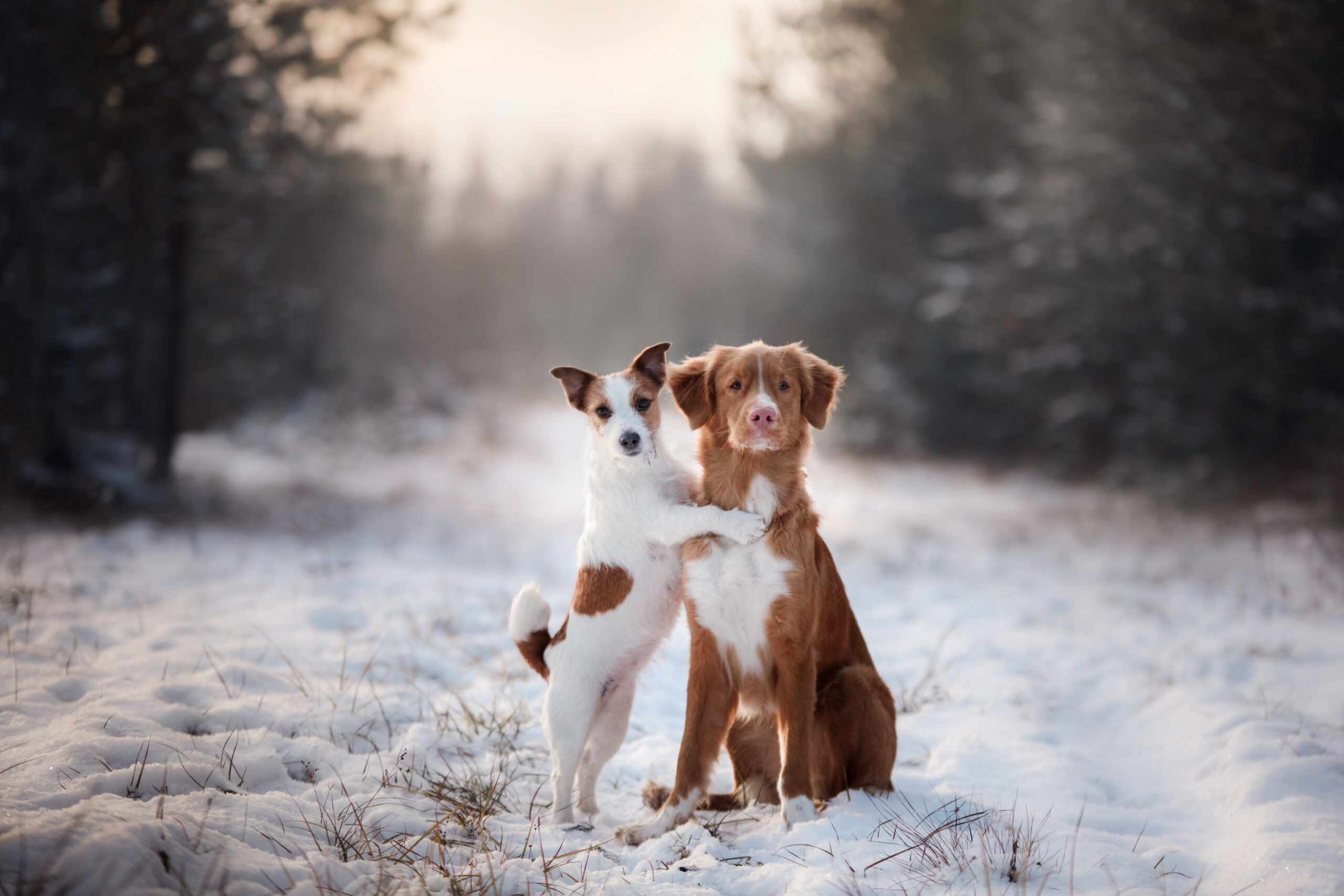Winter weather isn’t just hard on humans; it can be tough on your dog too! Avoid seasonal dangers to your dog’s wellbeing with these simple tips and tricks for grooming, safety, and infurmation.
No Pupsicles Here!
Even though dogs have fur to protect them from the elements, that fur isn’t always enough to keep them warm. Dog breeds that originated in sunny climates aren’t as well suited for ice and snow as others. If your pooch has short fur, make sure you wrap him up in a sweater before heading outside.
To prevent frostbite, it’s also important to limit your dog’s time outdoors when it’s particularly cold out. How do you know if it’s time to bring your dog inside? Since extremities are most susceptible to getting frost-bitten, feel your dog’s ears, nose, tail, and paw pads: do they feel warm? If not, it’s time to high-tail it back into the house!
Patrol the Paws
Canine paws tend to get the brunt of winter damage in more ways than you’d think! Pay a little extra attention to those toe-beans by regularly doing as follows:
- The chemicals and sharpness of rock salt can cause major paw irritation. Avoid walking your pooch over salted surfaces, and use a pet-safe rock salt substitute on your property.
- The fur between your dog’s toes can accumulate clumps of snow, which can cause frostbite and discomfort. Make sure you keep the fur trimmed short to minimize the risk.
- Ice, snow, and other winter debris make the pads of your pup’s paws dry. If left unchecked, this dryness can lead to painful cracking and flaking. Check the bottoms of your dog’s paws and wipe them off after spending time outside, and apply soothing paw-balms regularly to keep those baby’s moisturized! This should be done before and after going out in chilly weather.
Grooming Guidance
You know how your skin tends to get dry and itchy in the winter? Dogs feel it too! Adjust your grooming regimen with these helpful tips.
- If you notice your dog’s nose is getting chapped, apply soothing cream or balm intended for canines.
- Make sure you brush the fur frequently to get rid of dead skin cells.
- Don’t use shampoo as often when bathing.
- Apply leave in conditioners for a little extra coat and skin hydration.
- Ask your veterinarian about healthy skin and coat supplements.
When trying out new products for your dog, make sure you consult with your vet, watch out for product recalls, and check customer reviews to make sure you get the best results!
Don’t Skimp on Exercise!
It can be tough to keep up on your fur-baby’s exercise in the winter, especially when you have to take shorter walks and outdoor play sessions. However, exercise and mental stimulation are pawsitively vital for your dog’s health and happiness! Here are a few activities to keep your pooch moving and entertained indoors.
- Set aside some time for training! Practice dog training commands “come” and “stay” by instructing your pooch to stay, then walk to another part of your home and have them come! Don’t forget – the key to successful dog trainingis positive reinforcement, so be sure to show your pooch plenty of affection and praise for listening.
- Hide treats around the house for your pup to sniff out.
- Give your furry friend stimulating self-play toys such as snuffle matts, textured nylon bones, and treat dispensing puzzles.
- Avoid playing games that encourage dominance and aggression such as tug-of-war. This game can lead to negative behaviors, for example, if your dog has something dangerous in his/her mouth and won’t let you take it away.
Now that you know how to keep your perfect pooches happy and healthy this winter, we hope you have a fun season like snow other!
Looking for dog training and boarding near you? You’re barking up the right tree. Our No-Force method dog training is guaranteed to last a lifetime, and our dog boarding program is jam packed with play time, treats, and lots of love! Contact us today to get started.

